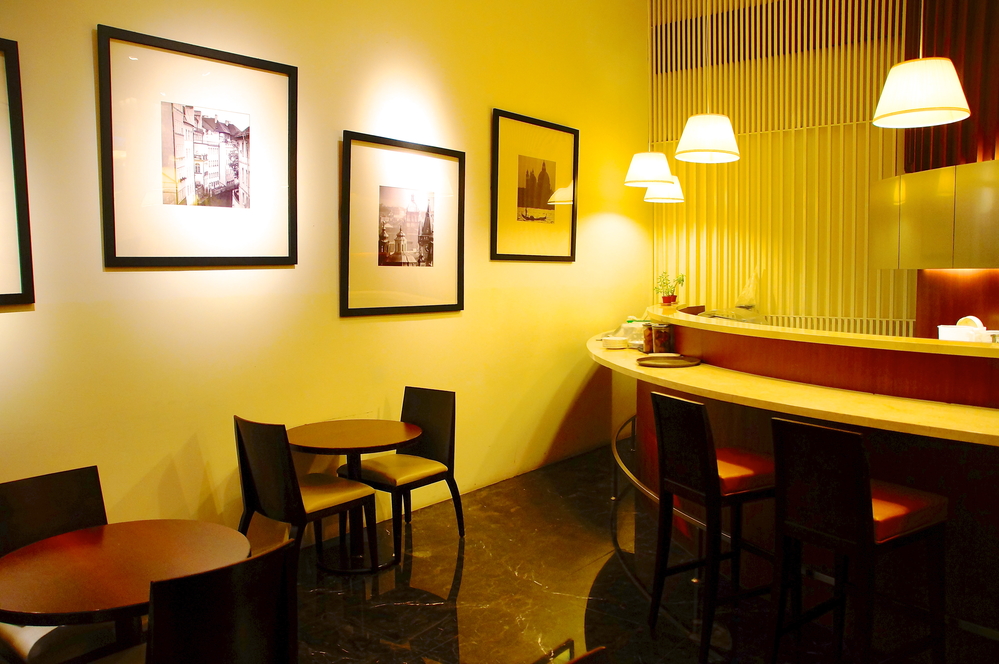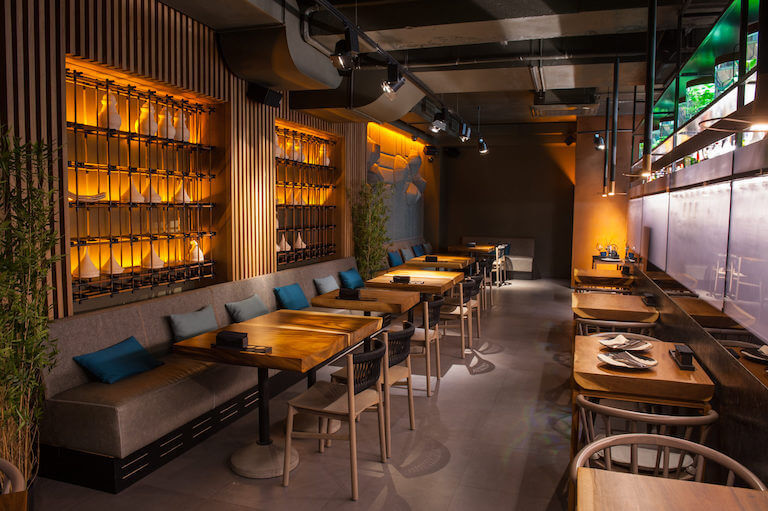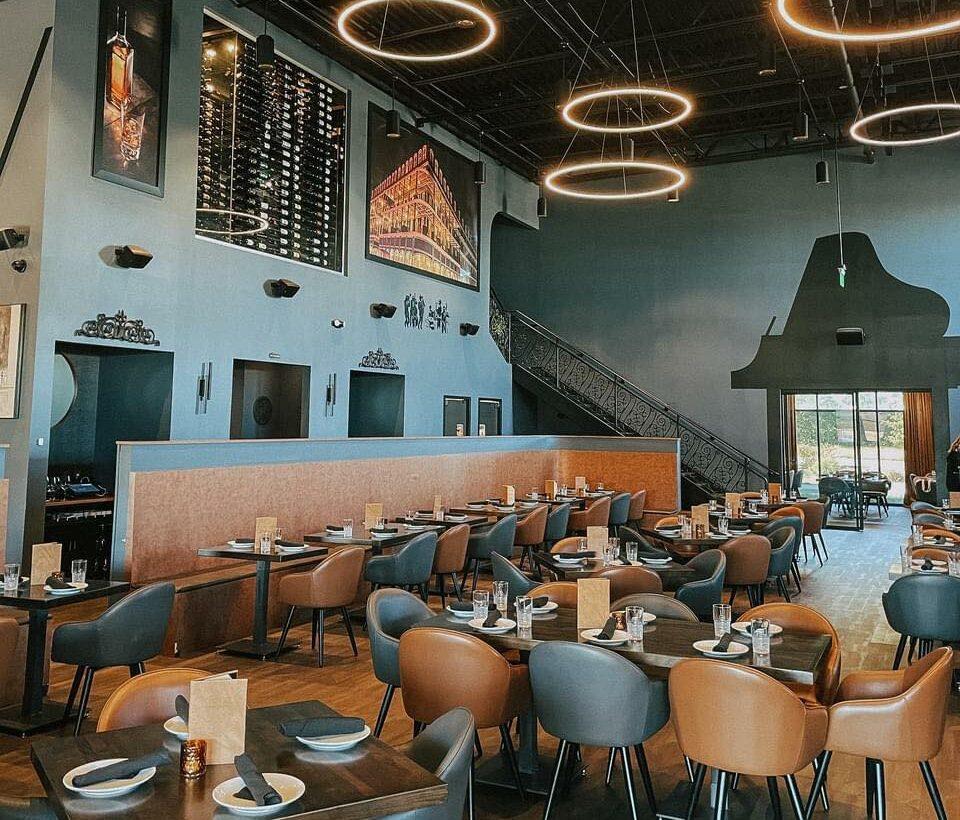Romantic Restaurants Islamabad: Perfect Dining Destinations for Couples
Romantic Restaurants Islamabad: Perfect Dining Destinations for Couples
Blog Article
Savor Genuine Oriental Cuisine With a Pan-Asian Spin for a Cooking Experience
Starting a cooking trip via genuine Asian food, boosted with a Pan-Asian twist, provides a special possibility to explore the abundant tapestry of flavors that specify the region's varied cooking traditions. This experience welcomes you to savor the elegant equilibrium of tastes-- pleasant, salty, spicy, and sour-- balanced by aromatic herbs and flavors. Imagine the ingenious combination of Thai curry and ramen or the unexpected joy of sushi burritos. As you contemplate these luring dishes, take into consideration the social stories and historical impacts that shape them, each bite supplying a story waiting to be uncovered.

Exploring Pan-Asian Flavors
In the realm of global gastronomy, Pan-Asian food stands apart for its exceptional variety and the unified interplay of flavors from different Eastern cultures. This culinary method commemorates the distinct ingredients and abundant practices located across the continent, producing a tapestry of tastes that is both enjoyable and appealing. Key to Pan-Asian food is its ability to balance contrasting flavors-- pleasant, salted, spicy, and sour-- while highlighting the quality and high quality of each ingredient.
From the umami-rich soy sauce of Japan to the fiery chili peppers of Thailand, Pan-Asian food offers a comprehensive combination of tastes. These aspects are commonly incorporated in inventive ways, boosting recipes with layers of intricacy. As an example, using aromatic herbs such as lemongrass and cilantro, usual in Vietnamese and Thai cuisine, adds a rejuvenating brightness to recipes, while the consolidation of coconut milk delivers a luscious, rich texture.
The emphasis on fresh produce and aromatic flavors ensures that each dish is not just a feast for the taste but likewise for the senses. Pan-Asian cuisine welcomes diners to start a culinary trip, discovering the large and differed landscapes of Asian gastronomy with every bite.
Combination Recipes to Attempt
While Pan-Asian cuisine is celebrated for its standard flavors, the contemporary culinary landscape is progressively embracing fusion dishes that blend these timeless elements with influences from various other regions. This cutting-edge technique not only honors the abundant heritage of Oriental culinary arts yet likewise introduces novel taste experiences that attract contemporary tastes buds.
An archetype of such a blend meal is the Korean-Mexican taco, where marinated bulgogi beef is wrapped in a cozy tortilla, topped with kimchi and a zesty gochujang-infused salsa. This mix weds the vibrant, full-flavored flavors of Korea with the dynamic, fresh aspects of Mexican food. Similarly, sushi burritos have gotten appeal, integrating the delicate virtuosity of Japanese sushi with the hearty, hand-held benefit of a burrito, typically featuring blend active ingredients like tempura shrimp and avocado with a drizzle of wasabi mayo.
One more noteworthy recipe is Thai curry ramen, which infuses the luscious, fragrant spices of Thai curry right into the reassuring broth of standard Japanese ramen, producing an unified mix that tantalizes the detects. These combination meals extend past mere uniqueness; they represent a cooking discussion in between societies, encouraging exploration and development in the globe of Pan-Asian cuisine.
Vital Active Ingredients and Flavors
To truly appreciate Pan-Asian food, one have to comprehend the crucial components and seasonings that create its structure. This diverse cooking design draws from a rich tapestry of Eastern traditions, employing a harmonious blend of appearances and tastes.
Aromatic components are essential, read with ginger, lemongrass, and garlic being common throughout different Pan-Asian dishes. These components supply an aromatic her explanation base that improves the complexity of tastes. Flavors such as celebrity anise, cardamom, and cinnamon introduce warmth and personality, echoing impacts from regions like China and India.

Cooking Strategies and Tips
Understanding the art of Pan-Asian cuisine requires knowledge with its distinct cooking techniques, each adding to the lively tapestry of flavors this culinary practice is commemorated for. Central to these methods is the stir-fry, a quick cooking technique that protects the nutritional honesty and vivid shades of active ingredients. Using a wok, the stir-fry technique permits even warm circulation, vital for accomplishing the particular texture and flavor equilibrium of Pan-Asian meals.
One more essential technique is steaming, particularly common in Chinese cuisine. This gentle approach maintains the natural tastes and nutrients of active ingredients, making it optimal for seafood and vegetables. Dumplings, a beloved staple, usually take advantage of steaming, causing soft, delicious appearances.
Barbecuing, additionally important, imparts smoky midsts to dishes such as Oriental bulgogi or Japanese yakitori (asian fusion restaurant). This technique typically entails seasoning active ingredients, enabling tastes to permeate deeply before food preparation over an open fire or hot plate
Last but not least, grasping the art of balancing flavors-- sweet, sour, salty, bitter, and umami-- is vital. Appropriately layering these components can raise a meal from average to amazing, providing a facility and pleasing culinary experience that personifies the essence of Pan-Asian food.
Eating Experiences Worldwide
Around the world, Pan-Asian cuisine provides an unrivaled eating experience, commemorated for its rich tapestry of tastes and vivid presentations. This cooking phenomenon has gone beyond cultural limits, recording the hearts and palates of food enthusiasts worldwide. In worldwide cities fresh York, London, and Sydney, Pan-Asian restaurants act as fusions where culinary traditions from Thailand, Japan, China, first watch near me and past converge, giving diners with an eclectic mix of dishes that highlight the area's diversity.
The international charm of Pan-Asian cuisine hinges on its capability to provide both authenticity and development. Cooks masterfully wed typical ingredients such as lemongrass, soy sauce, and miso with modern techniques, causing meals that are both refreshingly brand-new and acquainted. This blend permits diners to get started on a cooking journey that respects heritage while accepting modernity.
Moreover, eating experiences are elevated through attentively created environments that show the principles of Pan-Asian visual appeals. From minimal Japanese-inspired interiors to vivid Thai-themed areas, each dining establishment uses an unique ambiance that complements the culinary offerings. Consequently, customers are not just taking in a meal but partaking in a social experience, making Pan-Asian eating an absolutely worldwide phenomenon.
Conclusion
The exploration of Pan-Asian food provides an extensive understanding of the intricate interplay of tastes and culinary practices across Asia. By accepting fusion dishes such as Thai curry ramen and sushi burritos, the cooking trip not only highlights the adaptability of conventional components but additionally showcases cutting-edge modern-day techniques. This gastronomic experience, improved by cooking techniques and crucial flavors, offers a distinct possibility to appreciate the cultural variety and cooking virtuosity that define Pan-Asian food on a worldwide scale.
Embarking on a cooking journey through authentic Asian cuisine, boosted with a Pan-Asian twist, supplies a distinct chance to check out the rich tapestry of flavors that define the region's diverse culinary customs.In the world of worldwide gastronomy, Pan-Asian cuisine stands out for its remarkable variety and the unified interaction of flavors from different Asian societies. Trick to Pan-Asian food is its capacity to stabilize different tastes-- wonderful, salty, spicy, and sour-- while highlighting the quality and top quality of each active ingredient.

Report this page